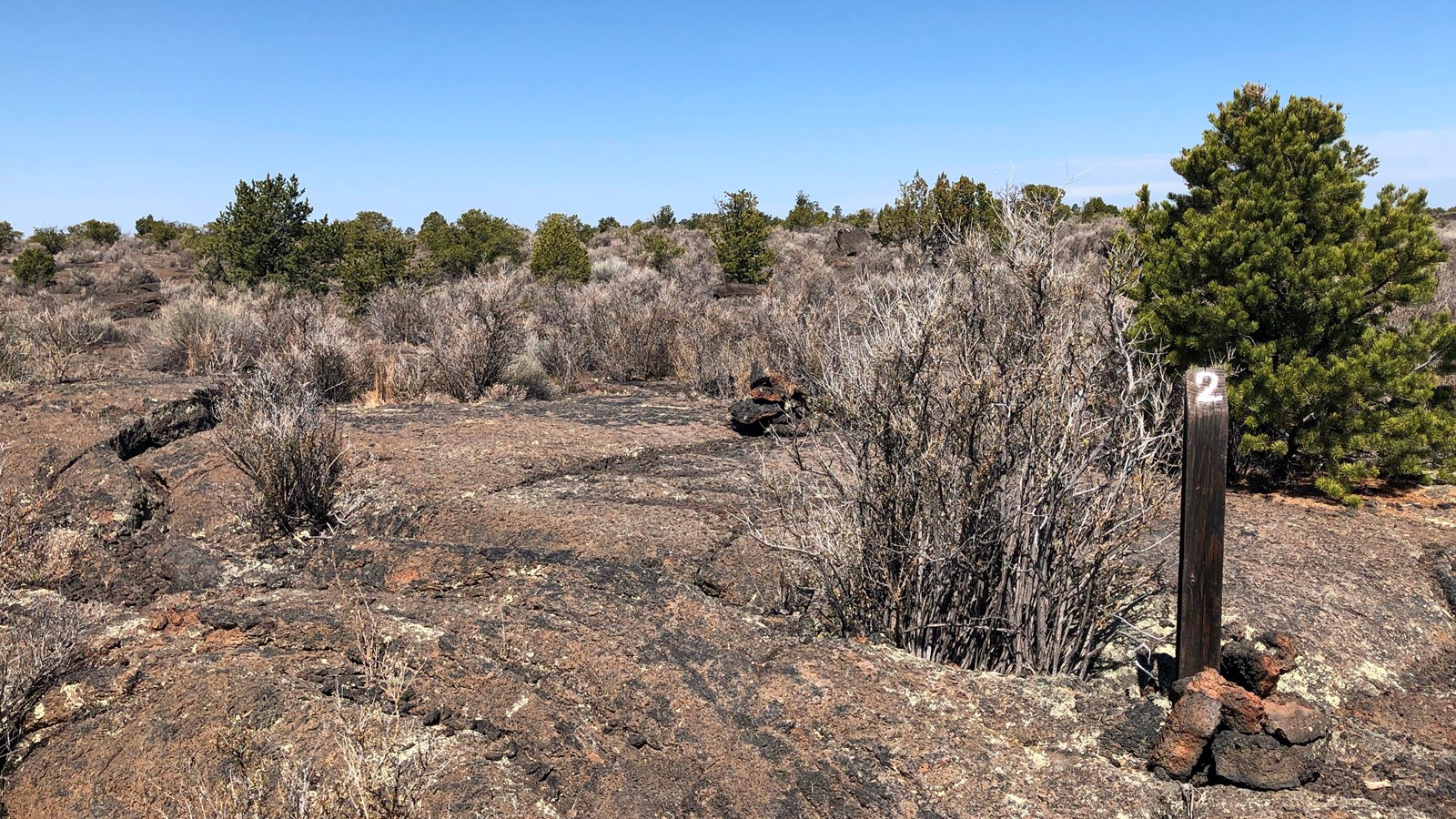Last updated: April 18, 2022
Place
Lava Falls Trail Stop #2

The Ground is Lava
Flowing lava creates different features and textures as it flows over, around, and under older, cooler lava flows. Gas bubbles trapped in the rock caused some areas to expand upward and outward. The speed and temperature of other lava flows caused surfaces to fold, fall, and fill in empty gaps. New lava can break through semi-solid rock, oozing across the path of
As the lava completely cooled, it shrank or contracted, cracked, and broke apart. Although the cooling process is over, today's features still tell the story of how the ground was shaped by lava.
See how many lava features you can find while you hike the trail today:
-
Squeeze-ups: Small mounds or thin ridges of lava from when still-hot lava was pushed up between two pieces of already-cooled lava.
-
Lava Toes: These lobe-shaped features form when molten lava breaks out of semi-hardened rock.
-
Ropy pahoehoe: Pronounced puh-HOY-hoy, this formation looks liike lines of rope lying next to each other. Pahoehoe forms when slow-moving lava folds against itself. You can re-create pahoehoe at home by laying a towel or blanket on a smooth surface and pushing it from one side.
-
Pressure ridges: Large, rounded ridges of formed when sideways forces push pieces of cooled lava against each other. These pieces, sometimes large slabs, collided into each other, sometimes forcing each other upwards. Cracks are common directly down the middle from where these collisions took place.
-
Collapse features: Sometimes called sinkholes, collapse features form when lava cools, shrinks, and breaks down into an opening below the surface of the cooled lava.
Now that you know what to look for, see how many features you can identify as you continue down the trail!
